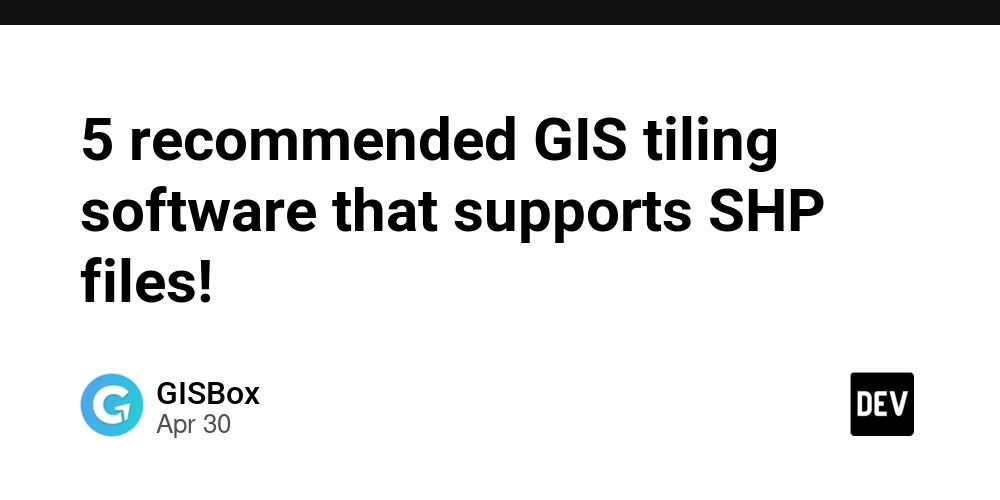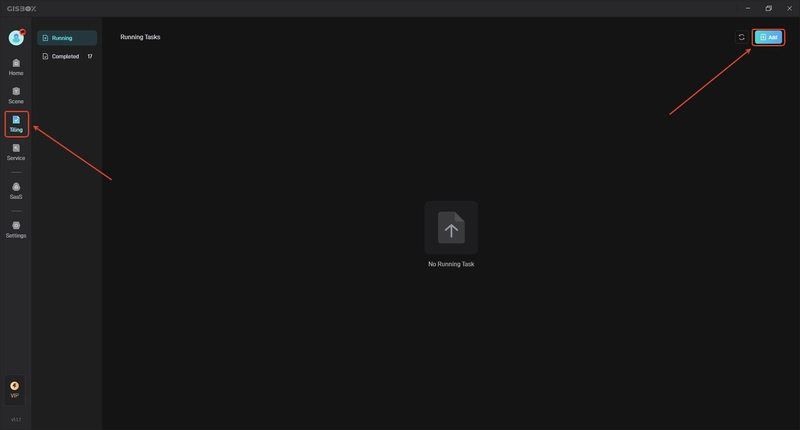5 Best Private Status Pages Providers
A private status page is a secure, internal communication tool that keeps employees, partners, or specific customers informed about the operational status of systems, services, and vendors. Unlike public status pages, which are accessible to anyone online, private status pages are restricted. They are often protected by logins or IP filters and used to share real-time updates with a controlled audience. Public vs. Private Status Pages While public status pages provide transparency to end users, private status pages are focused on internal coordination. They're invaluable for internal IT teams, DevOps, and enterprise support desks who need to communicate service statuses and planned maintenance without exposing sensitive details publicly. Some platforms even support sharing the status of third-party tools and cloud vendors, but this feature is often limited. That’s where StatusGator stands out: it offers both public and private status pages and uniquely aggregates status updates from over 5,000 cloud providers, giving IT teams a unified view of internal and third-party system health. Private Status Page Pricing Costs vary by provider and the features required. While some offer free or entry-level plans, advanced features, like third-party vendor aggregation or enterprise-grade access controls, typically fall under premium or custom plans. Top Private Status Page Solutions 1. StatusGator StatusGator is a powerful and easy-to-deploy private status page solution, purpose-built for organizations that rely on a wide ecosystem of cloud services. It aggregates the status pages of over 5,000+ third-party providers into a single, unified page. This includes statuses of AWS, Microsoft 365, Zoom, GitHub, and other popular platforms. The service allows IT and DevOps teams to share internal service status, vendor uptime, and incident updates without exposing sensitive information publicly. Key Features: Unified Monitoring of Third-Party Services: StatusGator consolidates the status of all the cloud tools your organization depends on, reducing the need for manual checks and fragmented monitoring. Built-In Website Monitoring: Monitor your own apps or infrastructure alongside vendor services, directly from your status page, a rare feature among private status page providers. Private Status Ingestion (Enterprise Feature): Ingest private, authenticated status data from services like Microsoft 365, Zoom, and Zendesk via APIs. This ensures deeper visibility into the actual state of services, even when providers don’t publicly expose this data. Early Warning Signals: Get notified about vendor issues before they're posted on public status pages. StatusGator analyzes a wide range of signals from API anomalies to social chatter, giving your team a head start in resolving or preparing for impact. Automated, Multi-Channel Notifications: Send instant alerts for downtime or maintenance via email, SMS, Slack, Microsoft Teams, Discord, or webhook, with unlimited notification rules. Password-Protected Access: Control access with login-protected or IP-filtered private status pages. It’s ideal for internal stakeholders, clients, or partners. API & Tool Integrations: Easily connect your status page to incident management platforms, ticketing systems, or CRMs using the StatusGator API. Quick Setup in Minutes: Add third-party services and custom components, configure notifications, and publish your private status page in three simple steps. Custom Branding & Domain Hosting: White-label your status page with your logo, colors, and custom domain to create a seamless, trusted experience for your internal users. Whether you're a K-12 school district, SaaS provider, or enterprise, StatusGator simplifies downtime transparency while reducing ticket burden and response time. StatusGator Pricing Plans 1. Free – $0/month 3 Monitors, 1 Board, 1 User, 500 Subscribers Includes: public status page, 1-month historical data, 4 integration options, cloud service monitors, and basic website/ping monitoring. 2. Starter – $72/month 25 Monitors, 1 Board, 1 User, 500 Subscribers Adds private status page, custom domains, unlimited notifications, and 3 months of historical data. 3. Team (Top Plan) – $137/month 75 Monitors, 3 Boards, 3 Users, 1,000 Subscribers Includes multiple users, Admin SSO, multiple status pages, and 6 months of historical data. 4. Corporate – $274/month 150 Monitors, 5 Boards, 10 Users, 1,000 Subscribers Adds hide StatusGator branding, more integrations, more users/pages, and 12 months of historical data. 5. Enterprise – From $799/month 200+ Monitors, 10+ Boards, 20+ Users, 5,000+ Subscribers Includes premium features like status page SSO, Private Status Ingestion, custom email branding, and 24 months of historical data. 2. Statuspage (by Atlassian) Statuspage is Atlassian’s dedicated tool for managing private and public status communication. I
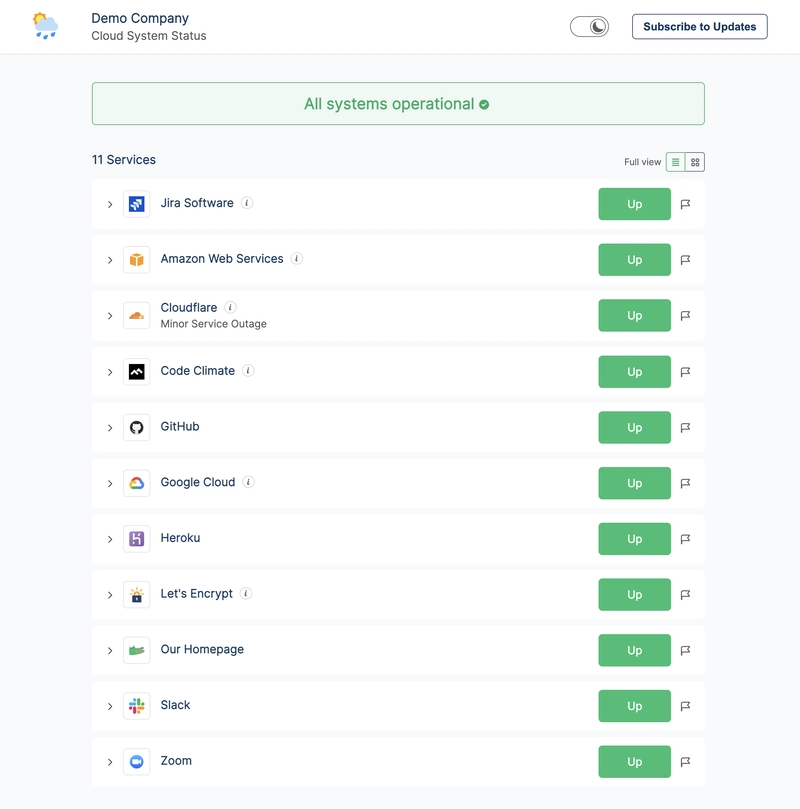
A private status page is a secure, internal communication tool that keeps employees, partners, or specific customers informed about the operational status of systems, services, and vendors.
Unlike public status pages, which are accessible to anyone online, private status pages are restricted. They are often protected by logins or IP filters and used to share real-time updates with a controlled audience.
Public vs. Private Status Pages
While public status pages provide transparency to end users, private status pages are focused on internal coordination. They're invaluable for internal IT teams, DevOps, and enterprise support desks who need to communicate service statuses and planned maintenance without exposing sensitive details publicly.
Some platforms even support sharing the status of third-party tools and cloud vendors, but this feature is often limited.
That’s where StatusGator stands out: it offers both public and private status pages and uniquely aggregates status updates from over 5,000 cloud providers, giving IT teams a unified view of internal and third-party system health.
Private Status Page Pricing
Costs vary by provider and the features required. While some offer free or entry-level plans, advanced features, like third-party vendor aggregation or enterprise-grade access controls, typically fall under premium or custom plans.
Top Private Status Page Solutions
1. StatusGator

StatusGator is a powerful and easy-to-deploy private status page solution, purpose-built for organizations that rely on a wide ecosystem of cloud services.
It aggregates the status pages of over 5,000+ third-party providers into a single, unified page. This includes statuses of AWS, Microsoft 365, Zoom, GitHub, and other popular platforms.
The service allows IT and DevOps teams to share internal service status, vendor uptime, and incident updates without exposing sensitive information publicly.
Key Features:
Unified Monitoring of Third-Party Services: StatusGator consolidates the status of all the cloud tools your organization depends on, reducing the need for manual checks and fragmented monitoring.
Built-In Website Monitoring: Monitor your own apps or infrastructure alongside vendor services, directly from your status page, a rare feature among private status page providers.
Private Status Ingestion (Enterprise Feature): Ingest private, authenticated status data from services like Microsoft 365, Zoom, and Zendesk via APIs. This ensures deeper visibility into the actual state of services, even when providers don’t publicly expose this data.
Early Warning Signals: Get notified about vendor issues before they're posted on public status pages. StatusGator analyzes a wide range of signals from API anomalies to social chatter, giving your team a head start in resolving or preparing for impact.
Automated, Multi-Channel Notifications: Send instant alerts for downtime or maintenance via email, SMS, Slack, Microsoft Teams, Discord, or webhook, with unlimited notification rules.
Password-Protected Access: Control access with login-protected or IP-filtered private status pages. It’s ideal for internal stakeholders, clients, or partners.
API & Tool Integrations: Easily connect your status page to incident management platforms, ticketing systems, or CRMs using the StatusGator API.
Quick Setup in Minutes: Add third-party services and custom components, configure notifications, and publish your private status page in three simple steps.
Custom Branding & Domain Hosting: White-label your status page with your logo, colors, and custom domain to create a seamless, trusted experience for your internal users.
Whether you're a K-12 school district, SaaS provider, or enterprise, StatusGator simplifies downtime transparency while reducing ticket burden and response time.
StatusGator Pricing Plans
1. Free – $0/month
3 Monitors, 1 Board, 1 User, 500 Subscribers
Includes: public status page, 1-month historical data, 4 integration options, cloud service monitors, and basic website/ping monitoring.
2. Starter – $72/month
25 Monitors, 1 Board, 1 User, 500 Subscribers
Adds private status page, custom domains, unlimited notifications, and 3 months of historical data.
3. Team (Top Plan) – $137/month
75 Monitors, 3 Boards, 3 Users, 1,000 Subscribers
Includes multiple users, Admin SSO, multiple status pages, and 6 months of historical data.
4. Corporate – $274/month
150 Monitors, 5 Boards, 10 Users, 1,000 Subscribers
Adds hide StatusGator branding, more integrations, more users/pages, and 12 months of historical data.
5. Enterprise – From $799/month
200+ Monitors, 10+ Boards, 20+ Users, 5,000+ Subscribers
Includes premium features like status page SSO, Private Status Ingestion, custom email branding, and 24 months of historical data.
2. Statuspage (by Atlassian)
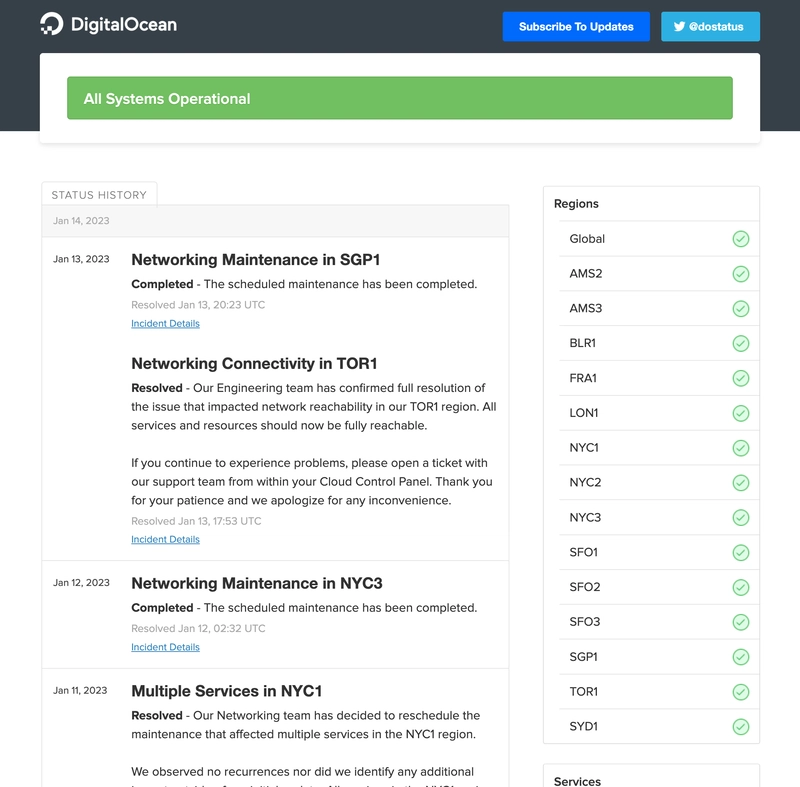
Statuspage is Atlassian’s dedicated tool for managing private and public status communication. It helps organizations share internal updates with specific teams or departments, reduce helpdesk tickets, and streamline incident communication across the company.
Private Status Page Features
Private Access Controls: Configure IP allowlisting, role-based access control (RBAC), and enforce team member SSO (via Atlassian Access) to restrict visibility to authorized users.
Automated Incident Notifications: Automatically notify stakeholders of downtime, maintenance events, and incident updates through email, SMS, or webhooks.
Developer-Friendly APIs: Use Statuspage’s REST APIs to manage status content programmatically and surface live status updates on internal dashboards or tools.
Custom Branding & Layout: Customize your private status page’s appearance using CSS, HTML, and JavaScript to match your internal brand or theme.
Localization Support: Through the Localize integration, translate your private status page into multiple languages for distributed teams—available on higher-tier plans.
Statuspage Private Plan Pricing
Starter – $79/month
Includes 5 team members, 50 authenticated subscribers, and 5 metrics. Features email notifications, Atlassian SSO support, custom CSS, incident templates, and support via chat or email.Growth – $249/month
Expands to 15 team members, 300 subscribers, and 15 metrics. Adds SMS and webhook notifications, IP allowlisting, component subscriptions, and support for custom HTML and JavaScript.Corporate – $599/month
Supports 35 team members, 1,000 subscribers, and 35 metrics. Adds yearly billing options, advanced RBAC, and everything from the Growth plan.Enterprise – $1,499/month
Designed for large organizations, with support for 50+ team members, 5,000+ subscribers, and custom metrics. Includes premium support with a dedicated account representative.
3. Status.io
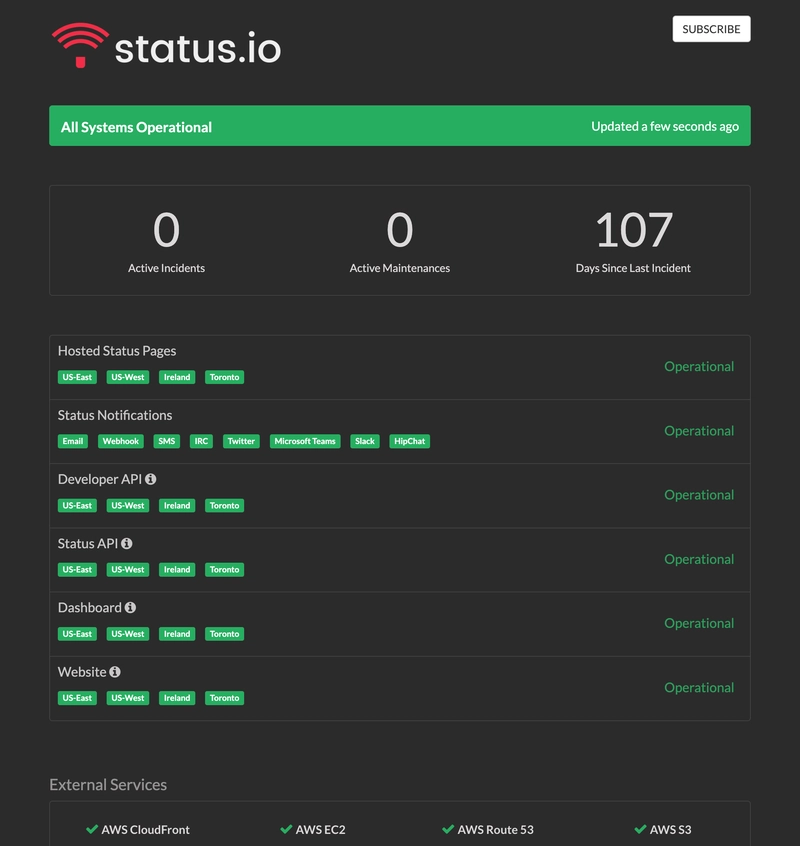
Status.io is a flexible and developer-friendly status page platform designed to support both public and private communication. With strong customization, automation, and infrastructure features, it caters to teams needing fine-grained control over incident updates and access.
Private Status Page Features
Private Access Control: Enable private mode using SSL and restrict access via SSO (OIDC or SAML) or IP allowlisting. Only authorized users can view sensitive status updates.
Multi-Channel Notifications: Automatically send status updates and maintenance alerts through email, SMS, RSS, webhooks, iCalendar, Microsoft Teams, Slack, IRC, HipChat, and Twitter.
Monitoring Tool Integrations: Seamlessly connect with monitoring and alerting platforms like Pingdom, New Relic, PagerDuty, OpsGenie, and Uptime Robot.
Geographic & Infrastructure Resilience: Status pages are hosted across multiple global cloud regions for high availability and fast performance.
Customization & White Labeling: Fully customize your page’s design with your logo, brand colors, and layout using HTML, CSS, and JavaScript. Use your own domain for a professional look.
Multilocation & Component Support: Show real-time status by geographic region and link components to specific locations for more detailed visibility.
Status.io Pricing for Private Status Pages
- Plus Plan – $349/month. Includes support for private status pages, 5,000 subscribers, 50 team members, up to 50 metrics, and unlimited updates. This plan unlocks all advanced features, including full branding customization, IP/password protection, compliance tools, and advanced subscriber management.
4. Uptime (formerly Better Uptime)
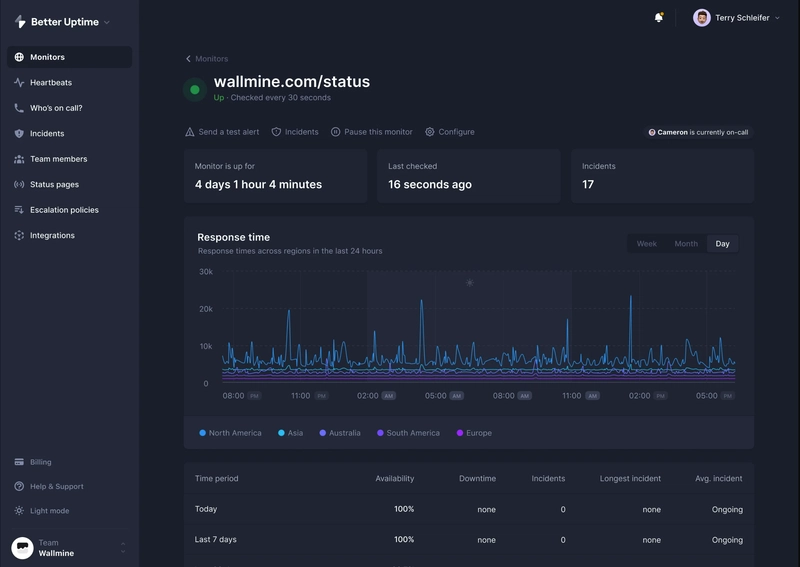
Uptime is a modern monitoring and incident management platform that combines uptime checks, alerting, and status pages. While private status pages are not the core focus, they are available as a valuable feature in higher-tier plans for internal communication and downtime transparency.
Private Status Page Features
Custom Subdomain Support: Publish public and private status pages under a branded subdomain (e.g., status.yourdomain.com) for professional internal or external communications.
Automated Alerts: Deliver incident updates through multiple channels, including email, Slack, Microsoft Teams, iOS/Android push notifications, phone calls, Zapier, and webhooks.
Extensive API & Integration Support: Connect Uptime to popular observability tools like AWS CloudWatch, Azure, Datadog, Grafana, Prometheus, New Relic, and Zabbix. Their RESTful API enables powerful automation and simplified infrastructure monitoring workflows.
Private Incident Routing: Incidents can be automatically assigned to relevant team members, allowing internal teams to act quickly without publicly disclosing issues.
Uptime Private Status Page Pricing
- Business Plan – Starts at $170/month per team. This is the only plan that includes access to private status pages. It supports up to 5 team members, unlimited monitors, unlimited alerts (including phone calls), on-call scheduling, and integrations with over 200 services. Business users also receive priority customer support.
5. Instatus
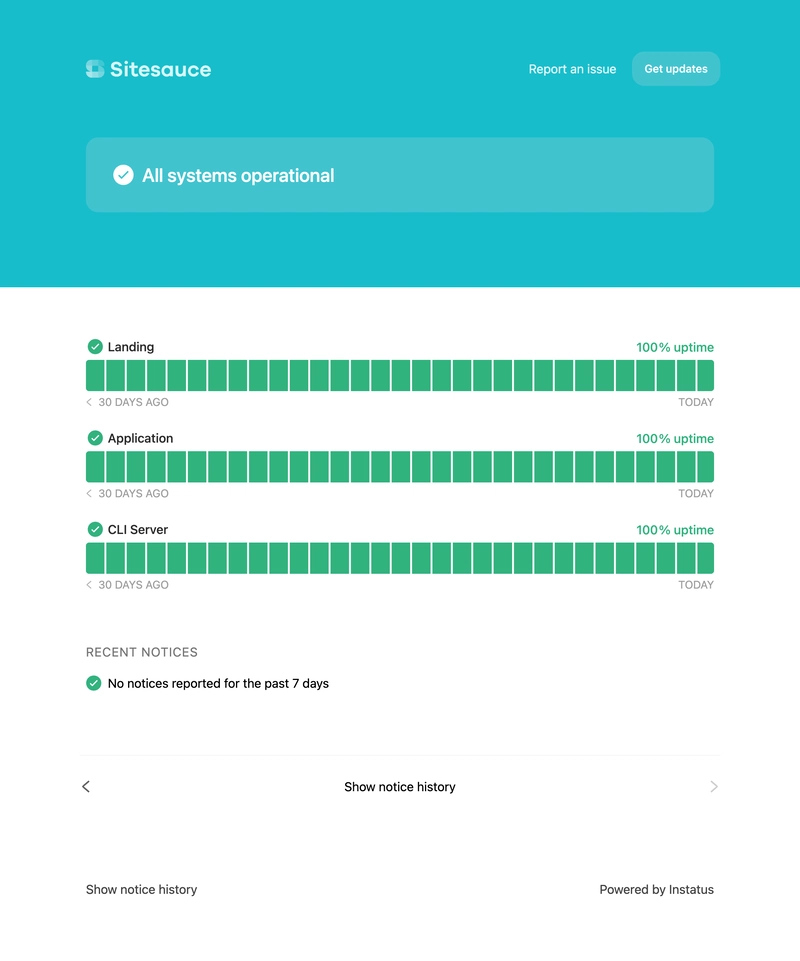
Instatus is a sleek and developer-friendly status page platform offering both public and private status pages. It’s designed for simplicity and speed, making it a solid option for teams that want to share system updates with internal stakeholders securely and professionally.
Private Status Page Features
Access Controls: Limit visibility of private status pages using IP allowlisting, email login, or a shared password for access control.
Automated Notifications: Send status updates and incident alerts via email, Slack, Discord, SMS, RSS, and webhooks.
Monitoring Integrations: Automate updates by connecting with monitoring tools like Datadog, Pingdom, Uptime Robot, New Relic, Freshping, and Runscope. A REST API is also available for custom integrations.
Customization: Style your page using HTML, CSS, and JavaScript, and use a custom domain to reinforce your brand.
Multilingual Support: Select from suggested languages to make your private status page accessible to a global team.
Instatus Private Status Page Pricing
Private Pro – Starts at $50/month
Includes IP allowlisting, email login, single password protection, unlimited team members and subscribers, and a custom domain. A 14-day free trial is available.Business – Starts at $300/month
Adds support for SSO/SAML login, up to three public or private pages, and custom billing options. Comes with a 30-day free trial and supports unlimited subscribers.
Why Use a Private Status Page?
Private status pages offer numerous advantages:
Improved communication: Centralize status updates to reduce confusion and eliminate scattered emails or DMs.
Faster response times: Notify specific teams via Slack, Teams, email, or other tools as soon as an incident occurs.
Fewer help desk tickets: Employees can check the page before opening a support request, reducing unnecessary ticket volume.
Enhanced control: Share only what’s necessary with only those who need to know, safeguarding internal systems and privacy.
Operational efficiency: Automate incident updates and streamline stakeholder communication without manual effort.
When Should You Create One?
Private status pages are ideal for:
Internal IT departments supporting distributed teams.
SaaS and cloud companies need to communicate with strategic partners.
Enterprises need to manage multiple third-party vendors.
Any organization aiming to deal with a large ticket volume during outages or planned maintenance.
Final Thoughts
Private status pages are no longer a luxury, they’re a necessity for modern IT teams, DevOps, SaaS providers, and enterprises managing complex systems and third-party services. The right solution not only improves transparency but also reduces support ticket volume, accelerates incident response, and builds trust with internal stakeholders.
Whether you're looking for unified monitoring like StatusGator, enterprise-grade control from Statuspage, developer flexibility with Status.io, modern simplicity via Instatus, or integrated alerting from Uptime, there’s a private status page provider that fits your organization's needs and scale.
As your infrastructure grows, so does the importance of clear, secure, and proactive communication. Investing in a private status page today means fewer surprises and faster resolution tomorrow.










